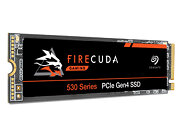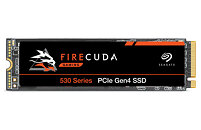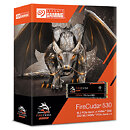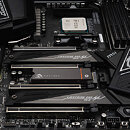Mar 17th, 2025 18:18 EDT
change timezone
Latest GPU Drivers
New Forum Posts
- DTS DCH Driver for Realtek HDA [DTS:X APO4 + DTS Interactive] (2116)
- Do you use Linux? (512)
- What are you playing? (23189)
- DDR4 to DDR5 Advice (12)
- Question about Intel Optane SSDs (10)
- What's your latest tech purchase? (23356)
- Will I benefit from changing the thermal pad? (57)
- I'm looking for a good tool to make the 3D scanning of my mini-pc using the photogrammetry and my Kinect 2. (140)
- Gtx 1050ti (19)
- Is RX 9070 VRAM temperature regular value or hotspot? (4)
Popular Reviews
- AMD Ryzen 9 9950X3D Review - Great for Gaming and Productivity
- Sapphire Radeon RX 9070 XT Nitro+ Review - Beating NVIDIA
- ASUS GeForce RTX 5090 TUF Review
- MSI GeForce RTX 5070 Gaming Trio OC Review
- VAXEE Zygen NP-01S V2 Wireless Review
- XFX Radeon RX 9070 XT Mercury OC Magnetic Air Review
- Gigabyte X870E Aorus Pro Review
- Kioxia Exceria Plus G4 2 TB Review - Energy-Efficient PCIe Gen 5
- ASUS Radeon RX 9070 TUF OC Review
- AMD Ryzen 7 9800X3D Review - The Best Gaming Processor
Controversial News Posts
- NVIDIA GeForce RTX 50 Cards Spotted with Missing ROPs, NVIDIA Confirms the Issue, Multiple Vendors Affected (519)
- AMD RDNA 4 and Radeon RX 9070 Series Unveiled: $549 & $599 (260)
- AMD Mentions Sub-$700 Pricing for Radeon RX 9070 GPU Series, Looks Like NV Minus $50 Again (250)
- NVIDIA Investigates GeForce RTX 50 Series "Blackwell" Black Screen and BSOD Issues (244)
- AMD Radeon RX 9070 and 9070 XT Official Performance Metrics Leaked, +42% 4K Performance Over Radeon RX 7900 GRE (195)
- AMD Radeon RX 9070-series Pricing Leaks Courtesy of MicroCenter (158)
- MSI Doesn't Plan Radeon RX 9000 Series GPUs, Skips AMD RDNA 4 Generation Entirely (124)
- Microsoft Introduces Copilot for Gaming (120)
Thursday, June 24th 2021

Seagate Announces FireCuda 530 M.2 NVMe Gen 4 SSD
Seagate today announced its newest PC gaming SSD, the FireCuda 530, at the company's inaugural virtual gaming event, SG21. The new drive offers gamers the latest PCIe Gen4 NVMe SSD technology and the fastest performance from the company's line of PC gaming storage products - bringing speed, endurance, and high capacity to the peak of PC performance.
Delivering sequential read speeds of up to 7300 MB/s, the FireCuda 530 catalyzes PCIe Gen4 power with transfer rates up to two times faster than PCIe Gen3 SSDs and 12 times faster than SATA-based SSDs. The drive is built with a Seagate-validated E18 controller and the latest 3D TLC NAND to provide the most advanced speed and durability for PC gaming. Seagate also offers a minimalist heatsink option, specially designed by EKWB that swaps out cooling fins for a more massive, high-grade aluminium block with a finely textured finish, maximizing cooling."This is Seagate's fastest and most powerful gaming SSD and we're showcasing it at our first-ever virtual gaming event to put a stake in the ground," said Jeff Fochtman, Senior Vice President of Marketing at Seagate Technology. "From the FireCuda 530, to our lineup of partners and guests at SG21, we're here to take it all to the next level."
"We had an exciting challenge to design a custom heatsink with the objective of having both form and function - a product that was low profile for tighter builds but also provided thermal management, while maintaining the sleek design that both Seagate's FireCuda line and EKWB are known for," said Kat Silberstein, Chief Executive Officer, Americas, at EKWB. "The open, collaborative spirit of Seagate and EK is what has allowed the FireCuda 530 to really sing."
Available in capacities up to 4 TB, the FireCuda 530 offers long lasting endurance of 1.8M MTBF and up to 5100 TBW—meaning gamers can write and delete 70% of the drive capacity every day for 5 years. Seagate's FireCuda 530 includes a three-year Rescue Data Recovery Service plan and a five-year limited warranty so gamers have peace of mind knowing their data is secure. The drive also comes bundled with Seagate's SeaTools and DiscWizard making it easy for gamers and PC builders to add new drives to their computer and monitor the health and performance of each drive.
Shipping this summer, Seagate's FireCuda 530 is offered for MSRPs of $139.99 (500 GB), $239.99 (1 TB), $489.99 (2 TB), and $949.99 (4 TB), and FireCuda 530 with the heatsink is offered for MSRPs of $159.99 (500 GB), $259.99 (1 TB), $539.99 (2 TB), and $999.99 (4 TB).
For more information, visit the product page.
Delivering sequential read speeds of up to 7300 MB/s, the FireCuda 530 catalyzes PCIe Gen4 power with transfer rates up to two times faster than PCIe Gen3 SSDs and 12 times faster than SATA-based SSDs. The drive is built with a Seagate-validated E18 controller and the latest 3D TLC NAND to provide the most advanced speed and durability for PC gaming. Seagate also offers a minimalist heatsink option, specially designed by EKWB that swaps out cooling fins for a more massive, high-grade aluminium block with a finely textured finish, maximizing cooling."This is Seagate's fastest and most powerful gaming SSD and we're showcasing it at our first-ever virtual gaming event to put a stake in the ground," said Jeff Fochtman, Senior Vice President of Marketing at Seagate Technology. "From the FireCuda 530, to our lineup of partners and guests at SG21, we're here to take it all to the next level."
"We had an exciting challenge to design a custom heatsink with the objective of having both form and function - a product that was low profile for tighter builds but also provided thermal management, while maintaining the sleek design that both Seagate's FireCuda line and EKWB are known for," said Kat Silberstein, Chief Executive Officer, Americas, at EKWB. "The open, collaborative spirit of Seagate and EK is what has allowed the FireCuda 530 to really sing."
Available in capacities up to 4 TB, the FireCuda 530 offers long lasting endurance of 1.8M MTBF and up to 5100 TBW—meaning gamers can write and delete 70% of the drive capacity every day for 5 years. Seagate's FireCuda 530 includes a three-year Rescue Data Recovery Service plan and a five-year limited warranty so gamers have peace of mind knowing their data is secure. The drive also comes bundled with Seagate's SeaTools and DiscWizard making it easy for gamers and PC builders to add new drives to their computer and monitor the health and performance of each drive.
Shipping this summer, Seagate's FireCuda 530 is offered for MSRPs of $139.99 (500 GB), $239.99 (1 TB), $489.99 (2 TB), and $949.99 (4 TB), and FireCuda 530 with the heatsink is offered for MSRPs of $159.99 (500 GB), $259.99 (1 TB), $539.99 (2 TB), and $999.99 (4 TB).
For more information, visit the product page.
Mar 17th, 2025 18:18 EDT
change timezone
Latest GPU Drivers
New Forum Posts
- DTS DCH Driver for Realtek HDA [DTS:X APO4 + DTS Interactive] (2116)
- Do you use Linux? (512)
- What are you playing? (23189)
- DDR4 to DDR5 Advice (12)
- Question about Intel Optane SSDs (10)
- What's your latest tech purchase? (23356)
- Will I benefit from changing the thermal pad? (57)
- I'm looking for a good tool to make the 3D scanning of my mini-pc using the photogrammetry and my Kinect 2. (140)
- Gtx 1050ti (19)
- Is RX 9070 VRAM temperature regular value or hotspot? (4)
Popular Reviews
- AMD Ryzen 9 9950X3D Review - Great for Gaming and Productivity
- Sapphire Radeon RX 9070 XT Nitro+ Review - Beating NVIDIA
- ASUS GeForce RTX 5090 TUF Review
- MSI GeForce RTX 5070 Gaming Trio OC Review
- VAXEE Zygen NP-01S V2 Wireless Review
- XFX Radeon RX 9070 XT Mercury OC Magnetic Air Review
- Gigabyte X870E Aorus Pro Review
- Kioxia Exceria Plus G4 2 TB Review - Energy-Efficient PCIe Gen 5
- ASUS Radeon RX 9070 TUF OC Review
- AMD Ryzen 7 9800X3D Review - The Best Gaming Processor
Controversial News Posts
- NVIDIA GeForce RTX 50 Cards Spotted with Missing ROPs, NVIDIA Confirms the Issue, Multiple Vendors Affected (519)
- AMD RDNA 4 and Radeon RX 9070 Series Unveiled: $549 & $599 (260)
- AMD Mentions Sub-$700 Pricing for Radeon RX 9070 GPU Series, Looks Like NV Minus $50 Again (250)
- NVIDIA Investigates GeForce RTX 50 Series "Blackwell" Black Screen and BSOD Issues (244)
- AMD Radeon RX 9070 and 9070 XT Official Performance Metrics Leaked, +42% 4K Performance Over Radeon RX 7900 GRE (195)
- AMD Radeon RX 9070-series Pricing Leaks Courtesy of MicroCenter (158)
- MSI Doesn't Plan Radeon RX 9000 Series GPUs, Skips AMD RDNA 4 Generation Entirely (124)
- Microsoft Introduces Copilot for Gaming (120)




21 Comments on Seagate Announces FireCuda 530 M.2 NVMe Gen 4 SSD
@W1zzard :rockout: :toast:I never take MSRP seriously anymore, black friday, or 6 months later amazon prime day, drives are always great prices. just have to be patient. /shrug
Do you have any other ground breaking statements that start with "Gamers don't need..."?
The Rocket 4 Plus is only rated for 5500 MB/s at 1TB (smallest capacity) vs 6000 MB/s here, but that's because the controller (Phison E18) itself is rated for 5500 MB/s there (and 2850 MB/s at 500GB - 3000 MB/s here). To be fair there are some improvements in SLC mode as well but by far and large the speed improvements are with TLC mode - look at the TPU cache graph for 176L vs the Addlink S95 (E18 + 96L) in direct-to-NAND/direct-to-TLC and folding modes; WAY Faster.
Still insanely fast, mind you, considering we're at 55-57 MB/s per die with BiCS3/4 for example.